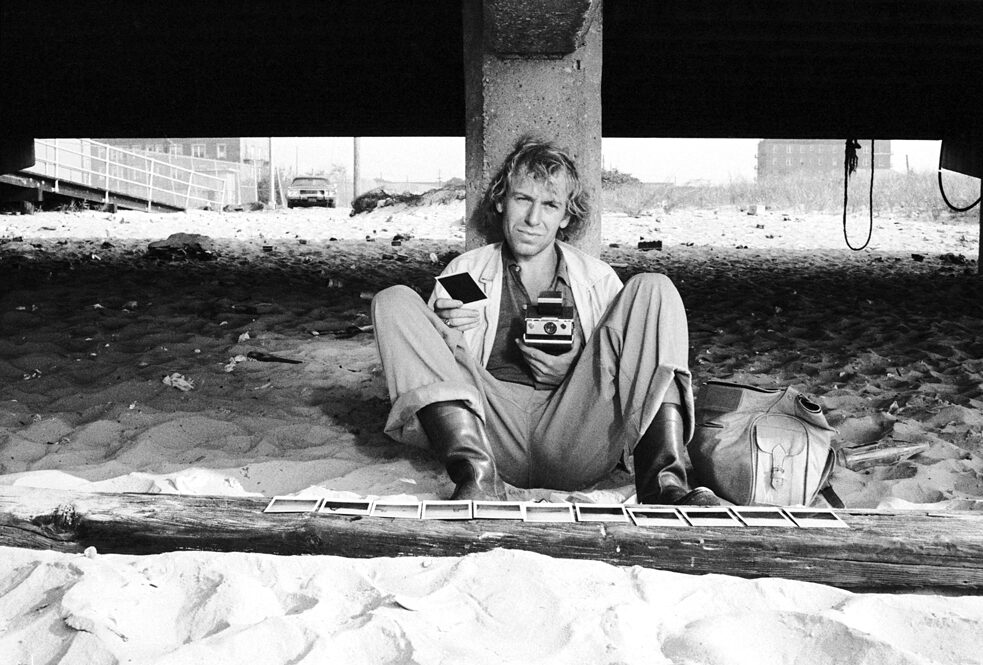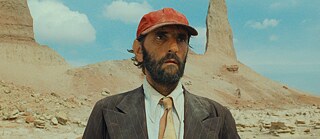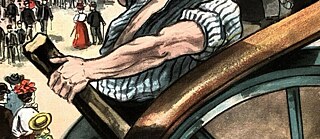Resting Images
Conquering Lost Time
Slow rhythm, stripped-down soundtrack, monastic atmosphere: the history of cinema is strewn with gestures of resistance to the tyranny of frenetic time imposed by the capitalist system. André Lavoie calls to mind some of the significant temporal parentheses in the cinema of yesterday and today.
In The Story of Film (Thunder’s Mouth Press, 2004), British film historian and critic Mark Cousins highlights a defining event that explains the frantic pace and haphazard editing that would dominate commercial cinema from the 1980s onward. In 1981, when MTV was launched, the first music video aired was “Video Killed the Radio Star” by The Buggles. Not only did it foreshadow a technological and musical revolution, but its aesthetic also allowed for the kind of editing that defied all spatiotemporal conventions, including the cardinal rule of invisibility beloved by classic cinema.
Of course, Ingmar Bergman, Jean-Luc Godard, Rainer Werner Fassbinder, Yasujirō Ozu, or Federico Fellini did not ask for MTV’s permission to defy conventions, shake up habits, and thwart the dictates of academism. The same goes for their heirs who come from countries as varied as Iran (Abbas Kiarostami), Hungary (Bela Tarr), Turkey (Nuri Bilgi Ceylan), Mexico (Carlos Reygadas), and Canada (Denis Côté). What do they all have in common? Very little, except a contemplative look at the world and a desire to watch the speed imposed by globalization and neoliberalism from the sidelines or with destabilizing immobility.
Tsai Ming-Liang is a Taiwanese filmmaker whose pessimism is openly inspired by Fassbinder. In Vive l’amour (1994), a film with almost no dialogue, a woman cries for several minutes in the middle of a park. The camera only observes her, thus underlining the city dwellers’ distress and solitude. Despite being charmed by the film, the Venice Film Festival management pressured Tsai Ming-Liang to shorten that particular sequence, finding it too long. Undaunted by the prestige of the event, he refused to comply. He left that year with a Golden Lion under his belt.
Fassbinder, who died in 1982, would have applauded the victory, seeing his legacy take on new forms. The way he stretches time by distilling oppressive climates and settling accounts with pre- and post-war Germany never ceases to be “exported,” and many filmmakers happily follow his lead for bold radicalism. Moreover, it doesn’t matter whether he anchors a story in the present (The bitter tears of Petra von Kant) or the 19th century (Effi Briest): The way he plunges his characters into irresistible melancholy remains unwavering.
 Phillip Winter (Rüdiger Vogler) suffers from writer’s block in Wim Wender’s “Alice in the Cities”
| © Filmverlag der Autoren/Wim Wenders Stiftung
Phillip Winter (Rüdiger Vogler) suffers from writer’s block in Wim Wender’s “Alice in the Cities”
| © Filmverlag der Autoren/Wim Wenders Stiftung
One of Fassbinder’s contemporaries, Wim Wenders, learned from him. Wenders started his career at a time when the enfant terrible of German cinema reigned supreme, and he also had his moment of glory, heavily influenced by American cinema. Beyond a fascination for film noir (The American Friend) or science fiction (The State of Things, Until the End of the World), Wenders seems most inspired by road movies, but his journeys are rarely accomplished at a run, giving the impression that Germany is as vast as America (Alice in the Cities, Kings of the Road). Moreover, it was in the U.S. that he signed one of his masterpieces, Paris, Texas (1984), an enigmatic title for a film shot in a glittering era. In this story of filiation and redemption that borrows from the landscapes of Westerns and a melancholy worthy of Antonioni, everything is conveyed through the empty eyes and silence of the character played by Harry Dean Stanton, a B-actor whose career would take an unexpected and much more prestigious turn thanks to the film’s consecration at the Cannes Film Festival.
If you remain unconvinced, listen to discussions surrounding Japanese filmmaker Ryûsuke Hamaguchi’s Drive My Car (2021). The question of slowness keeps coming up, as though this aesthetic and narrative bias completely obscured the film’s ambitions and narrative issues. In the eyes of many, the film’s singularity suddenly becomes its main fault, especially when the remote control is readily available for distraction.
In this context, would filmmakers like Alain Resnais (Last Year at Marienbad), Chris Marker (La Jetée), and so many others of their caliber survive? Undoubtedly yes, but they would be more marginalized. Unless they left the theater, those discussing their films watched them from beginning to end. It was a simple stance of cinephilic curiosity and intellectual honesty — values that are incompatible with the tyranny of clickbait and swiping.
Judiciously, Alain Tanner, a Swiss-born filmmaker whose films were never set with clock precision, features a close-up of one in his famous film In the White City (1983). Puzzled to see the clock hands turning the wrong way, a sailor played by Bruno Ganz calls out to the waitress at the bar. “That clock over there goes backwards,” he says with a wry smile. The waitress replies: “No, it goes alright. The world is going backwards.”
Of course, Ingmar Bergman, Jean-Luc Godard, Rainer Werner Fassbinder, Yasujirō Ozu, or Federico Fellini did not ask for MTV’s permission to defy conventions, shake up habits, and thwart the dictates of academism. The same goes for their heirs who come from countries as varied as Iran (Abbas Kiarostami), Hungary (Bela Tarr), Turkey (Nuri Bilgi Ceylan), Mexico (Carlos Reygadas), and Canada (Denis Côté). What do they all have in common? Very little, except a contemplative look at the world and a desire to watch the speed imposed by globalization and neoliberalism from the sidelines or with destabilizing immobility.
The Crying Woman
Some filmmakers see in this static posture a fierce will to stand out as much as to disturb, restricting themselves to a parallel cinematographic universe, including that of festivals. However, even in these sanctuaries, the meditative gaze can become a source of scandal or embarrassment.Tsai Ming-Liang is a Taiwanese filmmaker whose pessimism is openly inspired by Fassbinder. In Vive l’amour (1994), a film with almost no dialogue, a woman cries for several minutes in the middle of a park. The camera only observes her, thus underlining the city dwellers’ distress and solitude. Despite being charmed by the film, the Venice Film Festival management pressured Tsai Ming-Liang to shorten that particular sequence, finding it too long. Undaunted by the prestige of the event, he refused to comply. He left that year with a Golden Lion under his belt.
Fassbinder, who died in 1982, would have applauded the victory, seeing his legacy take on new forms. The way he stretches time by distilling oppressive climates and settling accounts with pre- and post-war Germany never ceases to be “exported,” and many filmmakers happily follow his lead for bold radicalism. Moreover, it doesn’t matter whether he anchors a story in the present (The bitter tears of Petra von Kant) or the 19th century (Effi Briest): The way he plunges his characters into irresistible melancholy remains unwavering.
 Phillip Winter (Rüdiger Vogler) suffers from writer’s block in Wim Wender’s “Alice in the Cities”
| © Filmverlag der Autoren/Wim Wenders Stiftung
Phillip Winter (Rüdiger Vogler) suffers from writer’s block in Wim Wender’s “Alice in the Cities”
| © Filmverlag der Autoren/Wim Wenders Stiftung
One of Fassbinder’s contemporaries, Wim Wenders, learned from him. Wenders started his career at a time when the enfant terrible of German cinema reigned supreme, and he also had his moment of glory, heavily influenced by American cinema. Beyond a fascination for film noir (The American Friend) or science fiction (The State of Things, Until the End of the World), Wenders seems most inspired by road movies, but his journeys are rarely accomplished at a run, giving the impression that Germany is as vast as America (Alice in the Cities, Kings of the Road). Moreover, it was in the U.S. that he signed one of his masterpieces, Paris, Texas (1984), an enigmatic title for a film shot in a glittering era. In this story of filiation and redemption that borrows from the landscapes of Westerns and a melancholy worthy of Antonioni, everything is conveyed through the empty eyes and silence of the character played by Harry Dean Stanton, a B-actor whose career would take an unexpected and much more prestigious turn thanks to the film’s consecration at the Cannes Film Festival.
Would They Survive Netflix?
Are we collectively afraid of cinematic languor? Marked by two pandemic years and a changed relationship with cinema due to streaming’s ubiquity, the current era seems to celebrate impatience in all its forms. This has repercussions on the way stories are told, especially in a context in which Netflix calculates the number of viewings per production in a byzantine and opaque fashion. Not so long ago, two minutes spent in front of any work was enough to make the user a spectator. The same phenomenon of acceleration is found on Spotify and its avatars, where the first seconds of a song must grab the listener’s attention to keep them hooked.If you remain unconvinced, listen to discussions surrounding Japanese filmmaker Ryûsuke Hamaguchi’s Drive My Car (2021). The question of slowness keeps coming up, as though this aesthetic and narrative bias completely obscured the film’s ambitions and narrative issues. In the eyes of many, the film’s singularity suddenly becomes its main fault, especially when the remote control is readily available for distraction.
In this context, would filmmakers like Alain Resnais (Last Year at Marienbad), Chris Marker (La Jetée), and so many others of their caliber survive? Undoubtedly yes, but they would be more marginalized. Unless they left the theater, those discussing their films watched them from beginning to end. It was a simple stance of cinephilic curiosity and intellectual honesty — values that are incompatible with the tyranny of clickbait and swiping.
Judiciously, Alain Tanner, a Swiss-born filmmaker whose films were never set with clock precision, features a close-up of one in his famous film In the White City (1983). Puzzled to see the clock hands turning the wrong way, a sailor played by Bruno Ganz calls out to the waitress at the bar. “That clock over there goes backwards,” he says with a wry smile. The waitress replies: “No, it goes alright. The world is going backwards.”






